I wrote this article in Japanese and translated it into English using ChatGPT. I also used ChatGPT to create the English article title. I did my best to correct any translation mistakes, but please let me know if you find any errors. By the way, I did not use ChatGPT when writing the Japanese article. The entire article was written from scratch by me, Saikawa Goto.
Introduction
Movies and books covered in this article
Three takeaways from this article
- “Science” is not a device that provides clear answers to “questions that are difficult to understand.”
- From the famous “Double-slit experiment,” we can understand “why science cannot fully explain how the world works.”
- What is the “falsifiability” that distinguishes “science” from “pseudoscience”?
Self-introduction article


Published Kindle books(Free on Kindle Unlimited)
“The genius Einstein: An easy-to-understand book about interesting science advances that is not too simple based on his life and discoveries: Theory of Relativity, Cosmology and Quantum Theory”
“Why is “lack of imagination” called “communication skills”?: Japanese-specific”negative” communication”
The quotes in the article were translated using ChatGPT from Japanese books, and are not direct quotes from the foreign language original books, even if they exist.
A Beginner-Friendly Science Book with a Grand Theme of “What Kind of Activity is Science?”
The Theme of This Book and Impressions of “Science”
The author of this book, Mr. Yamucha, is highly praised as a writer who explains science, mathematics, and philosophy in a very easy-to-understand manner.


He is a very trusted author whose books on genres that are normally only esoteric to the average reader can intellectually excite even those readers who have no knowledge of the subject matter.
This book is like a collection of “weird stories of science,” and it mainly focuses on a field called “quantum mechanics.”
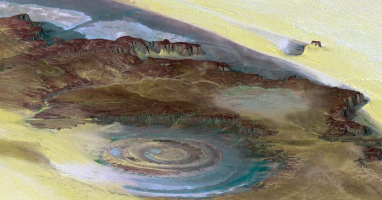
However, in this article, I hardly touch on the content of quantum mechanics. Although the stories about quantum mechanics covered in this book would be full of surprising tales that beginners may hear for the first time, they are knowledge that most people with a certain level of science background would already know. Even I knew most of the knowledge in this book before reading it.
However, that doesn’t mean this book is boring. This is because it’s not just a trivia book listing “strange stories of science,” but a work that incorporates a grand theme, “What kind of activity is science?”
When we examine “scientific correctness” from a philosophical perspective, we come to realize that it is quite precarious. The moment when the landscape we thought was certain crumbles is scary but also a little bit enjoyable.
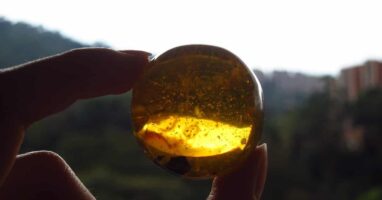
I’m originally from a science background, and I especially like the physics stuff. I’m interested in science in general, and of course, I trust science. I think that “it’s best to trust science” while understanding the essence of what “science” is, such as how scientists make claims that are “correct” after clearing rigorous conditions, or where the limits of science lie.
But normally, people don’t have many opportunities to think about “science.”
For example, you may have seen phrases like “scientifically proven diet” before. Have you ever thought about what that really means?

Of course, there is a possibility that it has been scientifically proven using an evaluation method called “double-blind test” and can be claimed to be truly “correct”. However, the word “scientific” used in advertisements does not usually mean that. Even if the situation is that “a doctor (not many doctors) says so” or “there are a few papers (not many) that make such claims,” the word “scientifically proven” is being used in current situations.
For those who are not familiar with science, they may think, “If a doctor says it, or if there is even a little bit of a paper about it, isn’t it true?” But that’s not the case. This can be said to be a misunderstanding of the discipline of “science”.
However, if it’s just this kind of “misunderstanding,” it can be understood as miscommunication between science and non-science fields. I think it’s a problem that can be solved through education and communication.

However, the issues addressed in this book are not at that level. The book reveals that “science cannot fundamentally capture ‘reality’,” and suggests that we must understand such “limitations” in order to engage with science.
I think that the points made in this book are ones that even people in the sciences have not given much thought to. I myself learned about them for the first time in this book.
I want you to touch the question in this book, “What is science essentially doing?”, that we don’t often think about on a daily basis, but that we can never ignore even in our daily lives.

There are “Limits” to Science
For people who are not familiar with “science,” I think they often think like this.
If I put a “question” into the black box called “science,” it will make it clear.
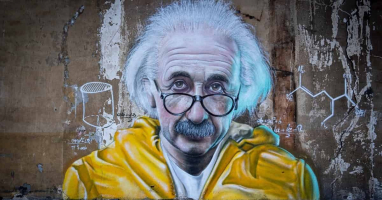
I feel that many people think that if they ask “science” a question, they will get a clear answer, even if they don’t know what “science” really is (i.e., like a black box).

However, that’s not what “science” is all about.
For example, there are times when “the safety of something” is discussed in the news. There is always some “subject to be scientifically evaluated for safety,” such as “measles vaccination” or “coronavirus vaccine.”

When reporters ask scientists and doctors questions like “Is XX 100% safe?” regarding topics like “measles vaccination” or “coronavirus vaccine,” they are supposed to be expecting a clear answer from the “black box” of science.
But neither scientists nor doctors can answer this question. This is because there is no “100%” in science. As I will explain in more detail later, only “science” can be called “science” if it includes the possibility of being wrong. In other words, everything that can be treated by “science” will never reach “100%.
In that sense, the question “Is XX 100% safe? is a wrong question itself.
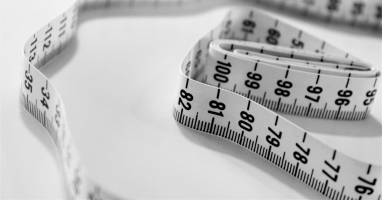
In science, there are limits. This is generally understood by people in the science field. So, if someone claims that this is “absolutely correct scientific knowledge,” it’s best to judge the person a fake.
Now, let’s get to the main topic of this book, “the limits of science.”
First, let’s extract the author’s conclusion:
So…Science has already ended the pursuit of the “true nature of the world” that science has been pursuing since ancient times. Science cannot know the true nature of the world. Since it cannot understand the truth, science can only choose theories based on the standard of “more convenient.

Both those familiar and unfamiliar with science may think that “science is a study that reveals how the world works.” However, the author argues that “such a role in science has already ended.” Furthermore, the author claims that “a ‘correct scientific theory’ is a ‘useful scientific theory’.”
Isn’t this a surprising conclusion?
In drawing these conclusions, the author pick up the “double-slit experiment,” which is known as a shocking experiment in the world of quantum mechanics.


It’s difficult to explain the “double-slit experiment” without using a diagram, so if you want to know more, please try searching on the internet (The following site is just an example).
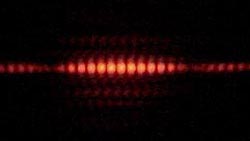
Here’s a rough explanation:
This experiment is often called “Young’s double-slit experiment” because it was first performed by a scientist named Young. He was active in the late 18th century, and he had a certain background for performing this experiment.
The background was the “debate about whether light is a wave or a particle.” I have a next article that goes into detail about this problem, so please read that.

Newton, a great scientist, was a “particleist,” but Young’s “double-slit experiment” confirmed that “light is a wave.”
However, this did not put an end to the debate…because a new “double-slit experiment” that improved the experiment Young conducted revealed that “light is a particle.”
What is really going on?
In Young’s experiment, “light is a wave,” and in the subsequent improved experiment, “light is a particle.” Scientists were greatly confused because it is incomprehensible according to the common sense of science that “it is both a wave and a particle.”

However, the results of the experiment clearly show that light is both a wave and a particle.
In modern science, it is understood that light has the property of being a wave at times and a particle at others. This is called “wave-particle duality,” and it has been found to apply to all tiny particles, including atoms.
This has led to the development of the field of “quantum mechanics,” which is full of “strange and unusual claims” that go beyond our everyday understanding.

Now the question is how the role of science has evolved against the backdrop of this history.
Scientists have conducted research out of a desire to understand how the world works. This was best exemplified by the famous Einstein, who criticized quantum mechanics throughout his life with the famous phrase “God doesn’t play dice.” The essence of his argument was that since quantum mechanics, which is governed by probability, cannot reveal “how the world works,” it is an incomplete discipline.
I compiled on a next article about the history of Einstein’s continuous attack on quantum mechanics and the contributions it made.
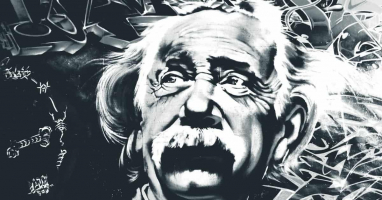
Einstein kept to have attacked a concept called the “Copenhagen interpretation,” which emerged from the “wave-particle duality.” From the “double-slit experiment,” the strange property of light as “a wave before observation and a particle after observation” came to be understood, and in a sense, this can be called “a contradiction arising from thinking about the ‘state before observation’.”
The Copenhagen interpretation claims that “there is no “existence” before observation. We can only speak about what happens after observation.”

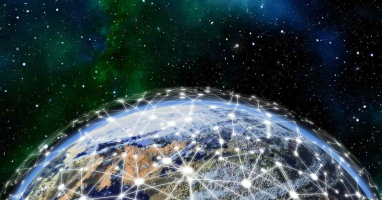
In other words, it’s a declaration that we should give up on trying to understand what the world was like before humans observe it. Einstein was resistant to the idea of denying the existence of reality before observation.
It’s reasonable to say that Einstein’s sentiment was sound. I also find it hard to accept the claim that reality before observation doesn’t exist. However, after Einstein’s death, a remarkable experiment was conducted, and it led to “Einstein’s defeat.” The article above also explains this flow of events.
By the way, Einstein was certainly defeated, but this doesn’t necessarily mean that the Copenhagen interpretation won. It just means that Einstein’s attack couldn’t demolish the Copenhagen interpretation’s claim. There is still plenty of room to consider the possibility that the Copenhagen interpretation is wrong.
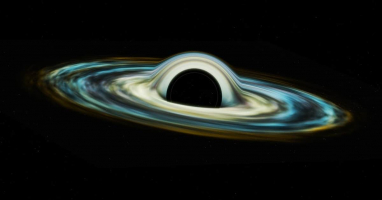
After this kind of controversy, the idea that “science cannot talk about the reality before observation” was born. Even now, “wave-particle duality” remains unresolved and scientists cannot understand the state of being “both a wave and a particle”.
After this kind of explanation, it should be easy to understand the author’s next argument.
Therefore, it should be noted that science does not say that “reality is really as Copenhagen interpretation explains”.
The role of science is to “create a theory that can be explained without contradiction and predict experimental results.” So, frankly speaking, whether “before observation it was a wave and after observation it transformed into a particle” is something that science doesn’t care about.

Of course, this doesn’t mean that scientists have lost their desire to explore and understand the world. Even today, scientists conduct research out of their curiosity to understand how the world works. However, they also understand that they cannot be certain if the conclusions drawn from experiments and observations reflect the reality itself.
Scientists cannot imagine the concept of something being both a wave and a particle, and even if the reality is such, they don’t fully comprehend its mechanism yet. Nonetheless, they still find it useful to think that way because it doesn’t contradict previous observations and yields a practical theory.

The main point of the author’s argument is that a “correct scientific theory” is really just a “useful scientific theory.”
This view of science may seem different from what we vaguely imagine. This is because that it means that science isn’t just a means of understanding the world, but rather a game of finding the most convenient explanation under the condition that it doesn’t contradict previous observations.
This explains why science can never be 100% certain. There can be multiple explanations that don’t contradict observations, and new discoveries may contradict past “correctness.” In other words, scientific theories are just hypotheses until new evidence emerges.
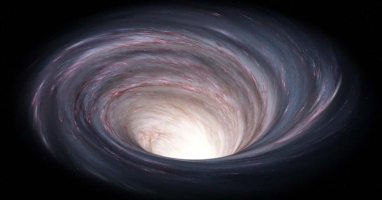
Now, there may be some who are disillusioned with such “state of science.” Some may feel that we can’t trust science, which can’t explain “how the world works.”
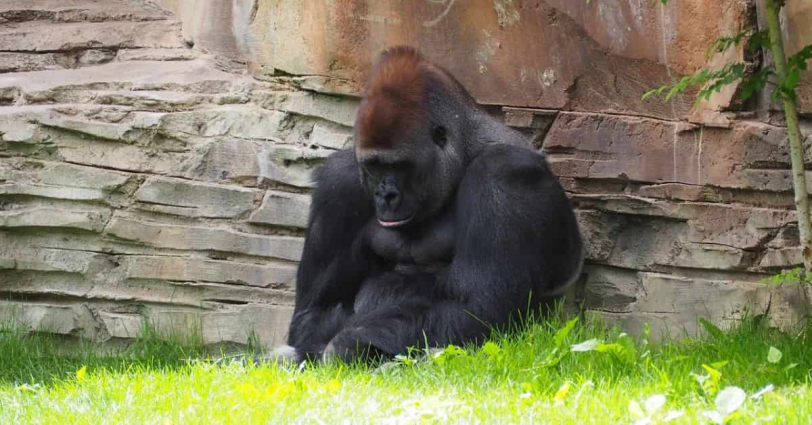
But I want to tell those people that they may have a misunderstanding of what science is supposed to do. If you see science as a “black box” that gives clear answers when you ask a question, it can be difficult to have a beneficial relationship with science.

Instead, it’s important to understand what science can and cannot do, and to switch to a way of thinking that effectively utilizes the strengths of science.
That’s why I think this book is a must-read for “people who are not familiar with science.” Because by having more people understand “What kind of activity is science?” I believe that science will become more beneficial to society.
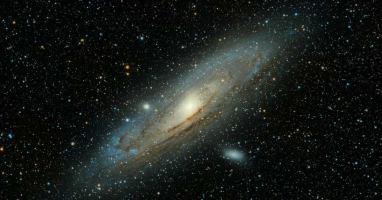
“Falsifiability” for Determining “This is Not Science”
The criteria that first come to for determining whether something is “scientific” or “not scientific” would be whether there are any contradictions. If a point of contradiction is found within a theory, it can be pointed out as an “error,” and there is a high possibility that it can be claimed as “not science.”
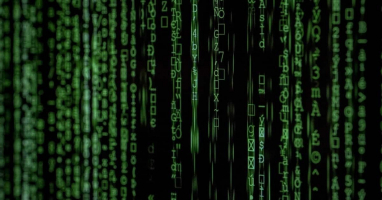
However, even among so-called “pseudosciences,” there are countless “theories that do not contradict previous knowledge.” It is impossible to determine based on only the criterion of “whether there is a contradiction.”
In this book, the author explain this point by taking up “non-Euclidean geometry,” which was discovered as a very shocking fact in the world of mathematics.
I wrote about “non-Euclidean geometry” in detail in the following article.

A quick rundown of the main points goes like this. Until then, mathematicians believed that geometry was the truth. And “geometry,” which originated in ancient Greece, is derived from five basic premises (called “axioms”). In other words, it means that these five axioms were considered “absolutely true.”

However, a mathematician demonstrated that by ignoring one of these five axioms, a new geometry could be created without contradiction. This amazed mathematicians who believed that “geometry is truth.” And what was previously called “geometry” became known as “Euclidean geometry,” while the “new geometry created by ignoring one of the five axioms” became known as “non-Euclidean geometry.”

It means that “geometry” was not necessarily the “truth.”
The biggest problem with this is that “even by arbitrarily deciding on and determine axioms, we can create any number of consistent theoretical systems.”
This was a very significant “event” in the history of mathematics.
Now it has become clear that “regardless of whether it is correct or not, any number of ‘consistent theoretical systems’ can be created.” In other words, it has also been shown that “just because it is consistent does not mean it is correct.”

During the time when this “non-Euclidean geometry” was discovered, there were many things like “pseudoscience” appearing one after another, and it was urgent to determine “what is science and what is not”.
In such a historical context, a group called the “Vienna Circle” consisting of philosophy professors at the University of Vienna who were focused on logical positivism took on this problem. They wanted to determine the boundary between “science” and “non-science”. After much deliberation, surprisingly, they reached the conclusion that “there is no boundary between science and pseudoscience”.
In other words, the point is indicate that “strictly speaking, there is no guarantee that any scientific claim is correct,” but such a rigorous discussion was not required. Rather, what was required was a means of fulfilling the desire to “sift things that scientists clearly feel are just pseudoscience based on some clear criteria”.

This is where the “falsifiability” proposed by Popper comes in. And with the advent of this concept, it can now be clearly asserted that “anything that does not have falsifiability is not science” (Another element of “science” is “reproducibility.” This means that “another person could conduct the same experiment and derive the same results.” I will not elaborate on this in this article).
As mentioned briefly at the beginning of this article, “falsifiability” means “the possibility of being wrong.” In other words, “any hypothesis that does not have the ‘possibility of being wrong’ is pseudoscience.”
What does this mean?

Let’s think about “clairvoyance,” which was often featured in TV shows in the past.
Suppose someone claims to have clairvoyance and performs an experiment in front of an audience to prove it. The details of the experiment can be anything, such as guessing the number on a flipped over card or guessing what’s inside a box.


Now let’s consider that the “self-proclaimed clairvoyant” says as follow before this experiment.
I certainly have clairvoyant abilities, but these abilities won’t be manifested when there are many skeptics in the same space as me. Therefore, I ask all of you in the audience to believe in me and watch over me so that I can succeed in clairvoyance.
Now let’s think about whether his clairvoyance falls within the realm of “science.”
If he succeeds in clairvoyance, he will undoubtedly claim, “I have clairvoyant abilities.” However, what if he fails in clairvoyance? In this case, he would be supposed to probably say, “I’m sorry, but there were many skeptics in this venue, so I couldn’t manifest my clairvoyant abilities.” This means that even if he fails, we cannot deny his claim, “I have clairvoyant abilities.”

In other words, his claim lacks “falsifiability” and therefore clairvoyance cannot be considered “scientific”.
It may be surprising, but for something to be considered “scientific”, it must always have the possibility of being proven wrong. As written in this book:
Generally, when we think of science, we tend to imagine it as something that is obviously correct or has been confirmed to be correct, but that is not the case. Interestingly, the premise of being scientific is whether one carries the risk of being pointed out as wrong.
Scientific theories are basically “confirmed to be correct” only when “the prediction derived from the hypothesis is recognized by experimentation/observation”. This means that they always have the possibility of being wrong. There are many cases in the history of science where proposed hypotheses have been disproved by experimentation/observation.
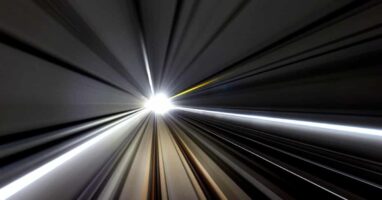
Science is a field that has advanced by “negating previous knowledge.” I heard a story once that in science courses at universities, they sometimes say “everything you have learned from textbooks so far is false, so forget it all” (although I’ve never been told that myself).
There are famous examples like the debate between geocentrism and heliocentrism, and even though we learn in school that the smallest unit of matter is an atom, we now know of an even smaller particle called a “quark.”
Newton’s “law of universal gravitation,” a wonderful theory that had held an unshakable position for over 300 years, was eventually found to have a flaw by Einstein. He then created a new theory of gravity called “General relativity,” which is a well-known fact.

That’s why scientists never say things like “This is 100% correct” or “There’s absolutely no mistake.” If they did, it wouldn’t be “science” anymore. This is a crucial point to understand when it comes to “science,” so it’s important to keep it in mind. Again, you should assume that anyone who makes any kind of categorical statement about scientific findings is a phony.
So far, I’ve talked about the importance of falsifiability, but this way of thinking isn’t perfect either. It’s obvious, for example, that the claim “All crows are white” is wrong, and therefore falsifiable. It means that just because something is falsifiable doesn’t mean it’s true.


That’s why in the end, the author sees “correctness” in science in this way:
In other words, scientific theories are based on human “decisions” such as “Shut up! This is absolutely correct!” and can only exist based on such biases.
In the end, “science” can only be established by the “belief that it should be correct.” Some people may feel uncertain about believing in such a thing, but at the very least, it can be said that it is the best among the “standards of correctness” that humanity has obtained so far. If we give up “science,” we would have to go back to an era where we can only judge things with superstition and magic, which cannot be called civilization.
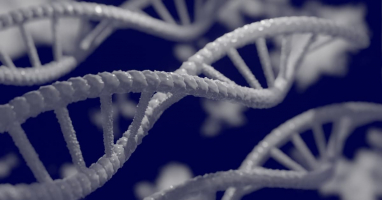
I hope you’ll think again about what the term “scientifically correct” means.
Conclusion
The book is written in a very readable style and explains complex concepts in an easy-to-understand way. Although not mentioned in this article, the field of “quantum mechanics” is full of fascinating and interesting stories, and there’s even a chapter in the book that features “Doraemon’s Anywhere Door” as part of that discussion.
Although the field of “quantum mechanics” and the study of “science” can be challenging, I think this work is a great way to get started and become more familiar with these topics.

Published Kindle books(Free on Kindle Unlimited)
“The genius Einstein: An easy-to-understand book about interesting science advances that is not too simple based on his life and discoveries: Theory of Relativity, Cosmology and Quantum Theory”
“Why is “lack of imagination” called “communication skills”?: Japanese-specific”negative” communication”








コメント